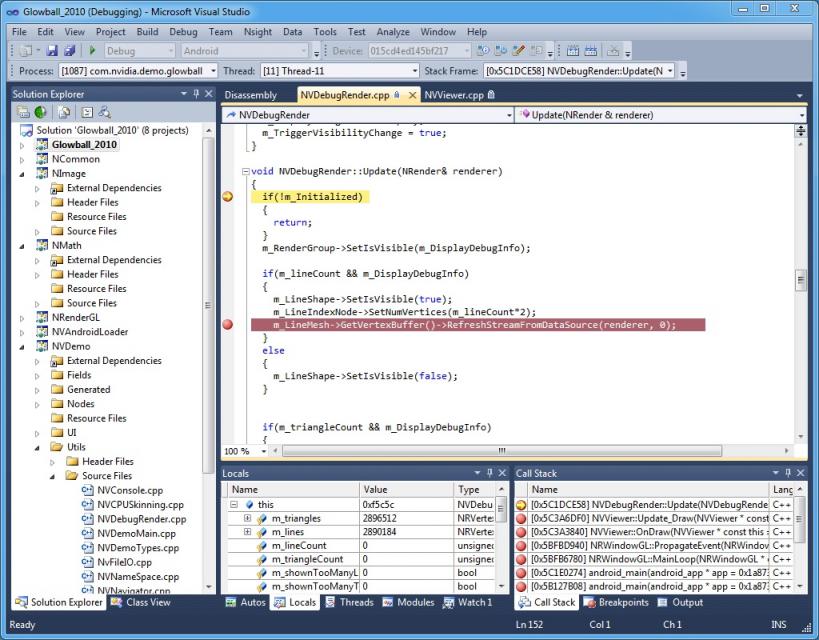Repeat after me: SoCs are paperweights if they can’t be programmed. Succeeding with a new part today means supporting a robust developer program to attract and engage as many creatives as possible. NVIDIA has teamed up with Mentor Graphics in just such an adventure. If you read just the press release, you may have missed the real news.
This story actually starts at the NVIDIA press event for CES 2013. Tegra 4 is announced, with quad-core ARM Cortex-A15 and 72 GeForce GPU cores – more accurately, a combination of six Vec4 vertex units for 24 cores, and four Vec4 pixel units for 48 cores. This provides six times the number of ALUs over the Tegra 3.
NVIDIA continued to tell the story about what something with 72 GPU cores could do, showing an example of computational photography where imagery could be corrected in real time. This is an angle the DSP and GPU community has been trying for some time – but as more and more photos are taken from smartphones instead of digital cameras, the use case for high dynamic range (HDR) imaging is getting stronger. With Tegra 4, NVIDIA says they now have enough horsepower to accomplish one-shot HDR in real-time.
Then a bit of a surprise was rolled out: Project SHIELD, the new handheld gaming console with Tegra 4 and Android inside. There are a lot of questions: has NVIDIA lost their mind, going up against Microsoft and Sony in gaming markets? If you roll back the video a few years, you’ll see people said exactly the same things when Microsoft announced the first Xbox. NVIDIA is facing the silicon reality of today: selling chips means selling platforms with content.

So, if you wanted to get more content for an Android platform, especially applications originally developed for Microsoft platforms, what would you do? Answer: enable Microsoft Visual Studio as the programming environment. There’s just a small detail: Android is all about Java, and most embedded and a lot of Visual Studio programmers work in C. Even the Android Native Development Kit page says native code generally doesn’t result in an improvement and makes things more complex. But, they also point to the problems C can solve in Android: self-contained, processor intensive operations like signal processing.
This is starting to sound not so far fetched after all. Mentor knows a thing or two about Android programming, having one of the best sets of Eclipse-based tools around and a deep track record with embedded developers. NVIDIA is already operating in Android circles with Tegra, and the launch of Tegra 4 brings impressive processing power to the game. NVIDIA is also operating in Windows 8 circles aggressively.
The brainchild Mentor and NVIDIA created is NVIDIA Nsight Tegra, Visual Studio Edition. Bringing the project management capability from Visual Studio with vastly improved integrated debugging capability and a seamless environment that handles both C and Java and knows about Tegra multicore architecture makes a compelling idea for developers.

The motivation for NVIDIA near-term may be getting games for Project SHIELD, but longer term this is really interesting for embedded developers working with Android in general. Eclipse-based tools are good, but there are many hardcore Visual Studio programmers who just won’t switch. Giving them a way to easily develop Android apps, with a way to tap into the computational power Tegra 4 and its GPU cores offers, means “game on”. Mentor has an upcoming webinar with more on the Android development solution for Tegra.
Just my opinions, now time for yours. Does having both C and Java for Android make this worth a look for more embedded programmers? Is Project SHIELD just a novel concept, or does it stand a chance of becoming a commercial gaming platform? Would a common programming environment for Windows 8 and Android mean more developers would port games and other apps to both platforms? Thoughts welcome.
Share this post via:






Comments
0 Replies to “SHIELDing the Android GPU developer in C”
You must register or log in to view/post comments.